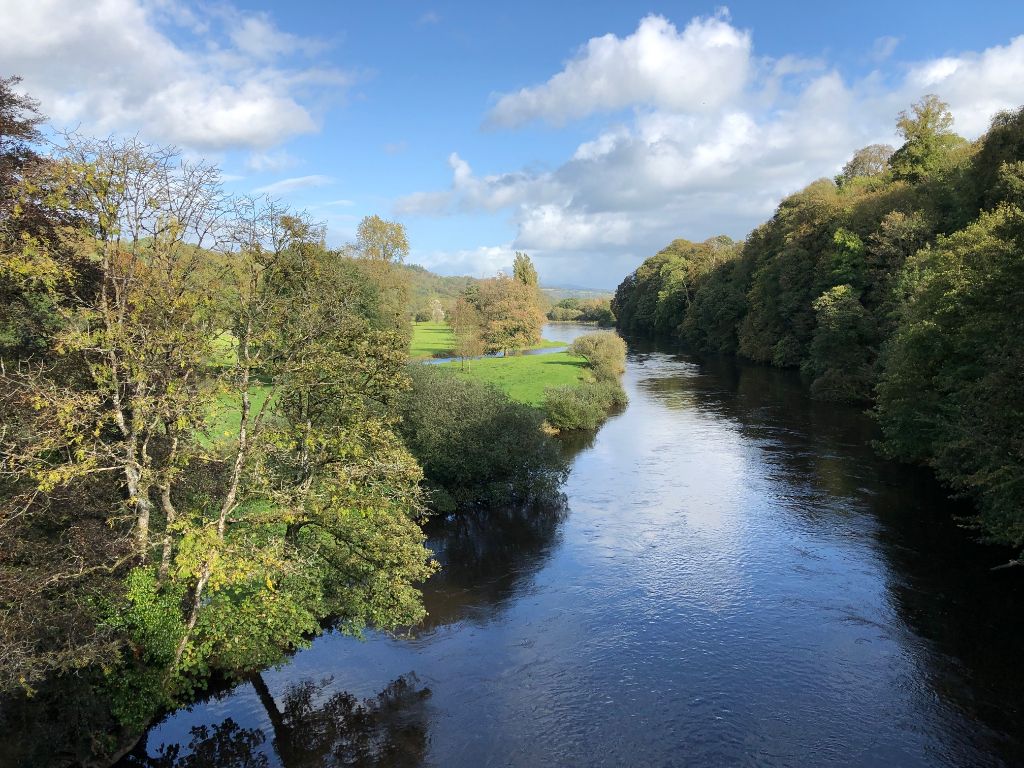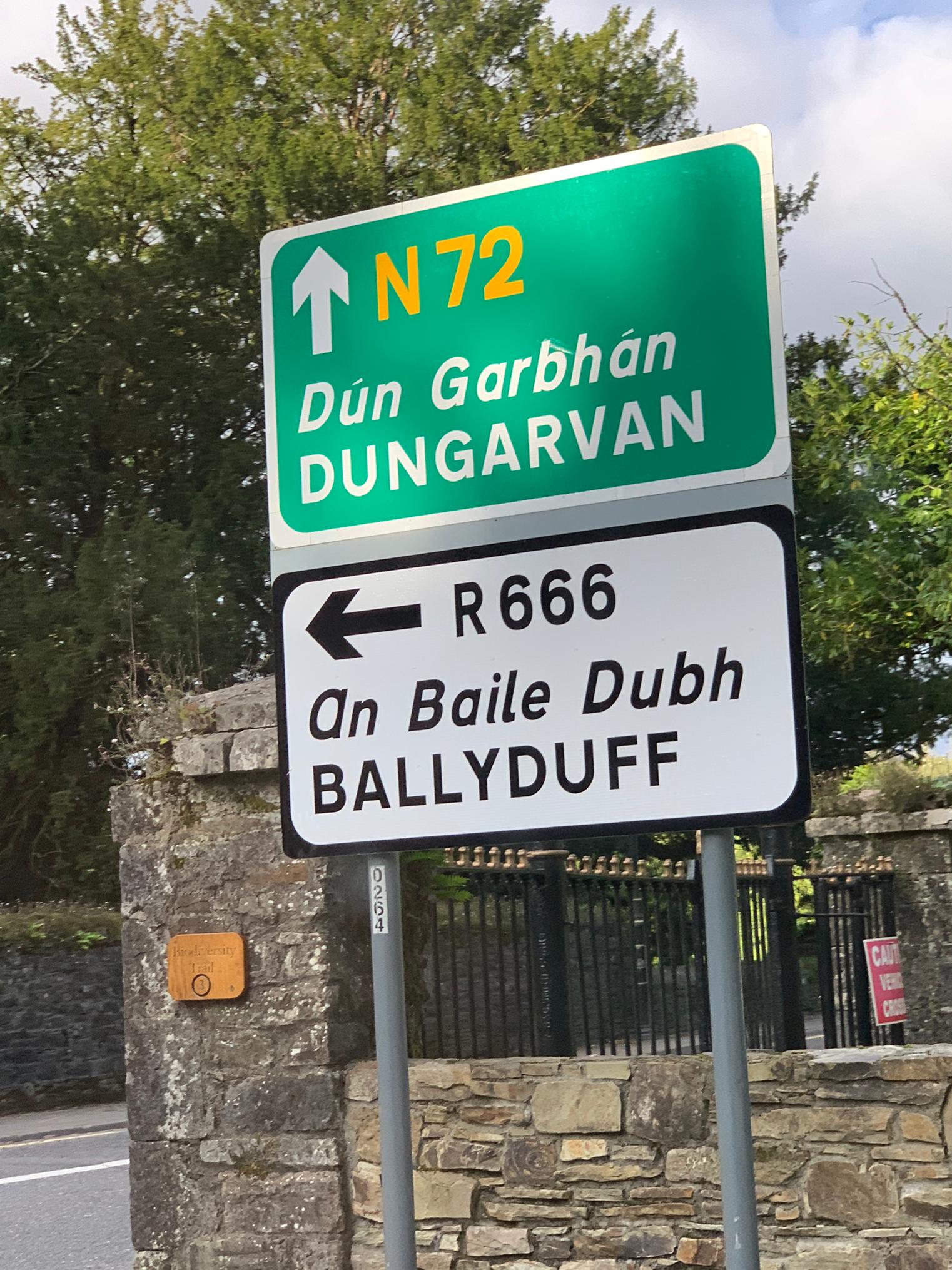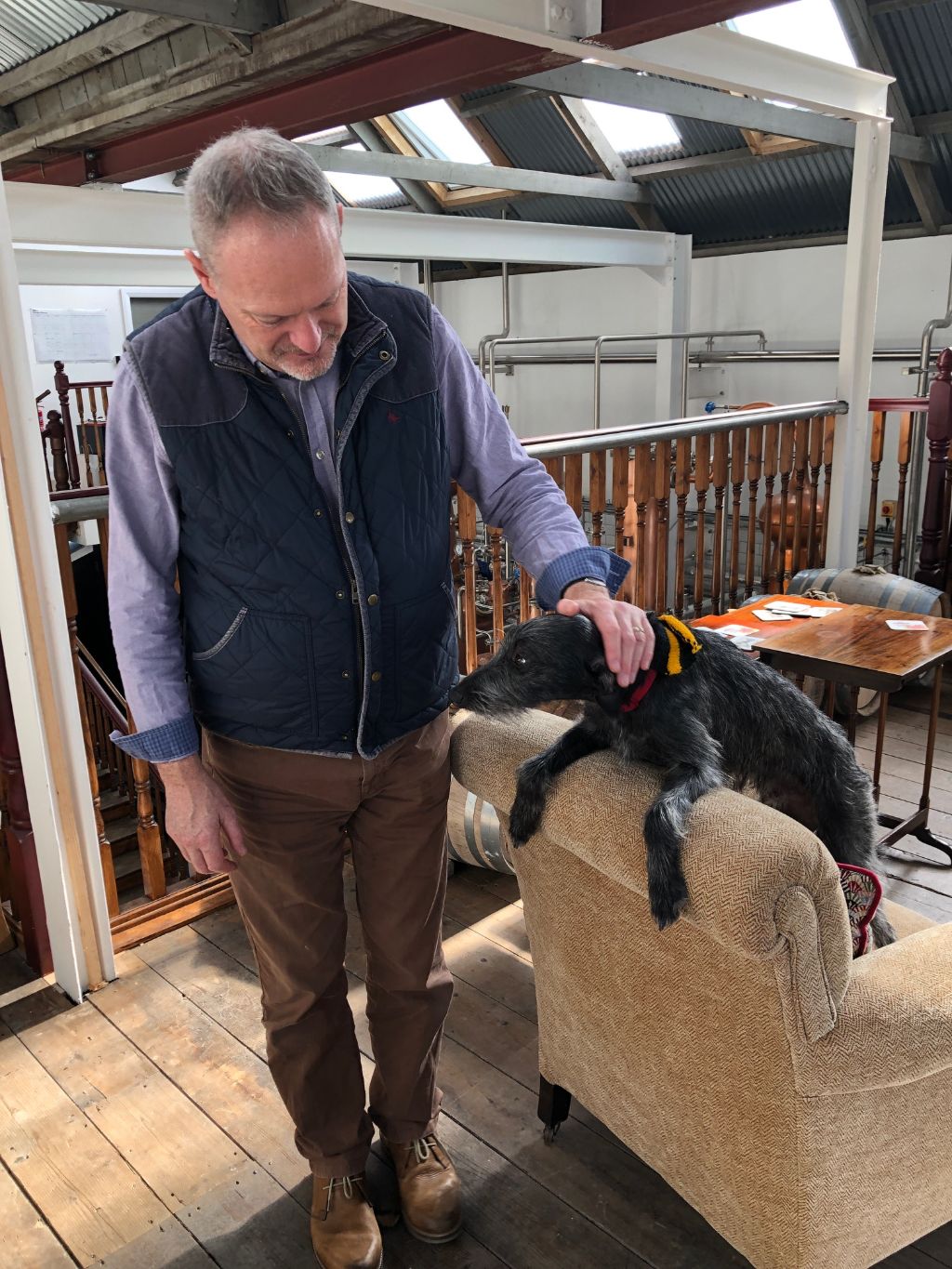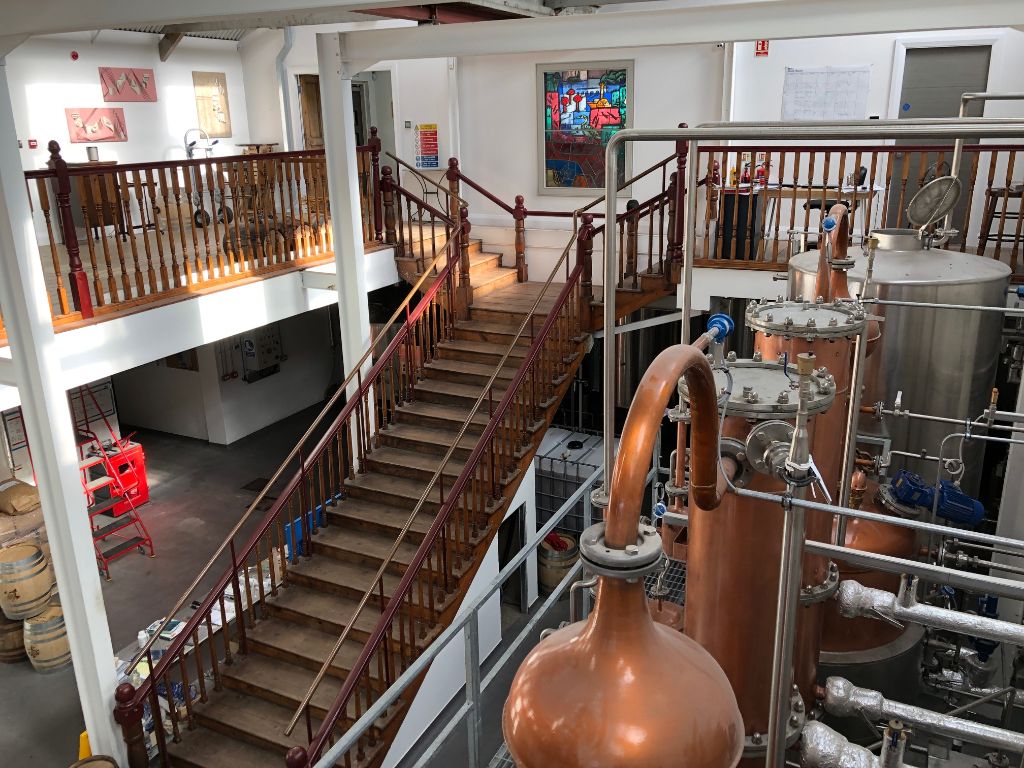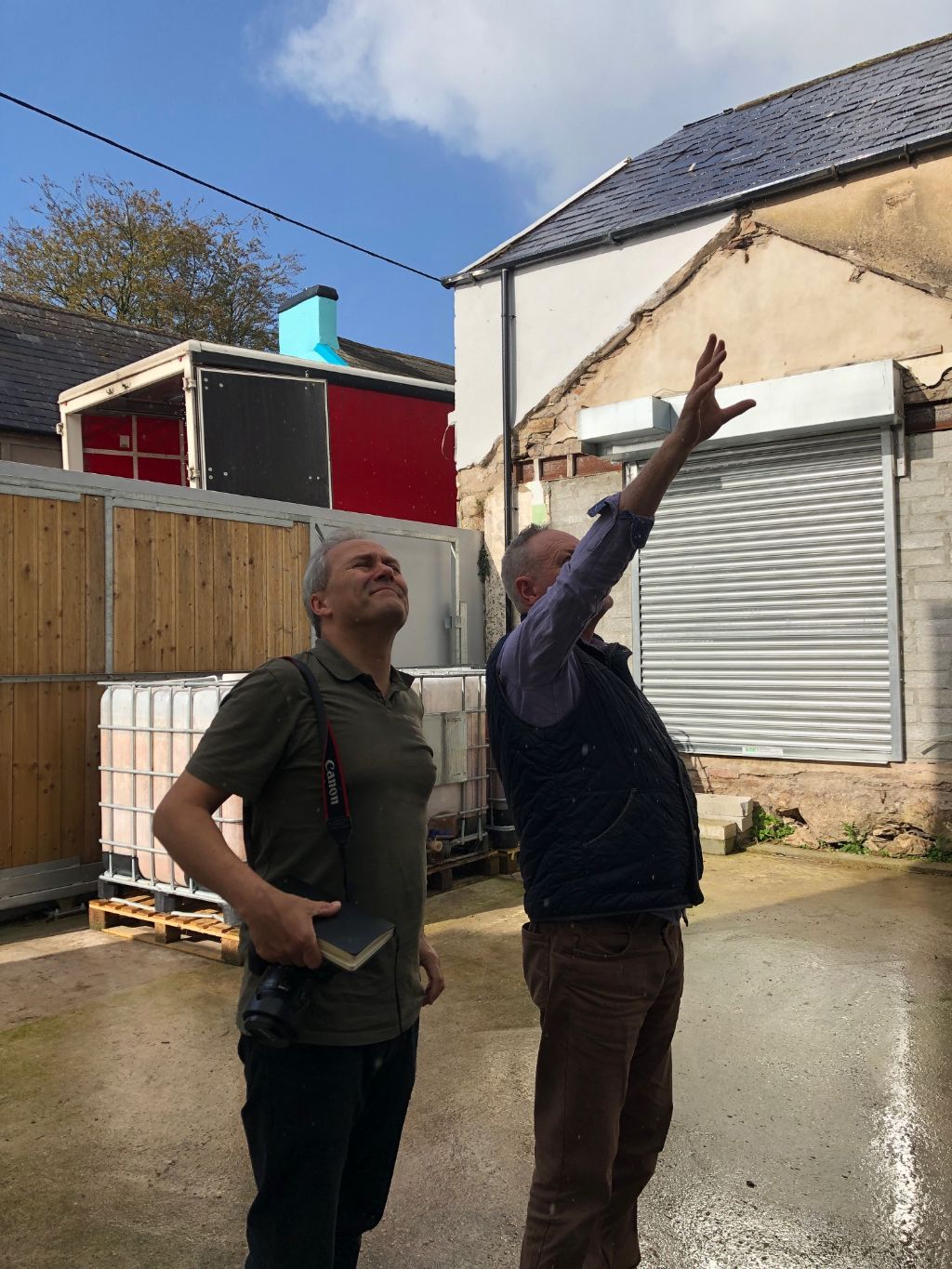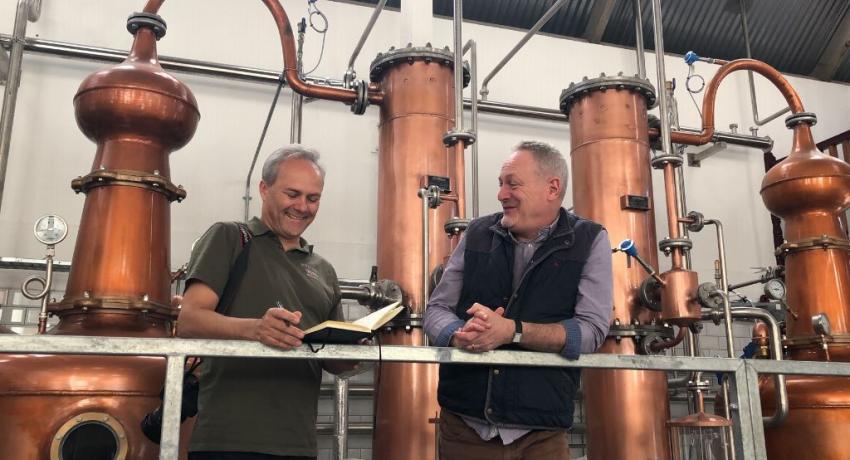Heading along the rather ominously named Route 666 east from Cork to Ballyduff, you will find Blackwater Distillery a stone’s throw from the eponymous river - love that word ‘eponymous’, I never pass up the chance of using it. ‘Black water’ doesn’t really conjure up tasty-looking images of anything you’d like to drink, but Peter Mulryan and his team are doing his best to produce something worth imbibing (‘imbibe’ - another favourite word).
The last time I came looking for Blackwater Distillery was during my Whiskey Burn trip. I was late, as absolutely usual, after getting delayed searching for an as-yet (and still) non-existing distillery between Waterford and there, and found myself standing outside a closed Blackwater gin-making facility in nearby Cappoquin. They had all gone home, and I was left out in the rain. I carried on south, through Cork and headed for the coast until the Vespa gave up outside a pub in Ballinahassig. The damp had got into the Vespa’s electrics (and my underwear) by that stage, but in the end I did manage to find a dry place for the night.
They have built their whiskey distillery now in Ballyduff, about 15 km from Cappoquin, and fired up the stills last Christmas Eve. Today Peter, MD of Blackwater Distillery, is here to welcome me; I have arranged to arrive early in the afternoon - not taking any chances this time. From the outside, the distillery looks like a converted shop, and that’s exactly what it is. The name hasn’t gone up above the door yet, and no branding has appeared on the windows to date, but that will all come to pass soon enough.
Blackwater Distillery inhabits the shell of D. McCarthy’s hardware store, and was built using train tracks for the erstwhile Great Southern and Western Railway Co. that ran from Waterford to Limerick via Cork. When they bought it, Peter says it had a ‘Marie Celeste’ look to it - the ledger and scales still on the counter, untouched products still on the shelves. The main room is split like the grand entrance hall to a mansion by a central wooden staircase, you might imagine Peter walking down to a ball with a duchess on his arm, I think there’s a scene like that in Titanic. To the left of the staircase is the mashing and fermenting department, while to the right is distillation.
Blackwater’s twin 1,200-litre pot stills with innovative cooling systems in the necks, for greater flexibility and control, and bulbous tops reminiscent in a way of gin stills, were designed and built by Frilli of Siena, who also made the stills for Teeling in Dublin. The difference here is that Blackwater will be double-distilling, instead of the traditional triple distillation long considered to be the hallmark of Irish whiskey. Triple distillation does refine the spirit, no doubt, but the other school of thought considers a double run over the lyne arms enough to extract enough of the right flavour/smoothness balance without compromising body and character. Rumour has it that Blackwater might also be missing off the ‘e’ in whiskey (that was a Dublin distillers’ marketing thing back in the day, anyway), check out the bottles when they go on sale for that.
We go up to the balcony that runs around the room. There’s a bar that could serve visitors and a sofa where we sit as Peter explains what the row of 50-litre casks is that lies along the bannisters. With his distiller, John, Peter is conducting fast-track, R&D experiments with locally grown raw materials and experimenting with processes involving malted barley, green (non-dried) malt, wheat, oats, rye, in an attempt to set both new benchmarks and discover the lost flavours of Irish whiskey’s past using century-old mash bills from long-silent Irish distilleries.
Maturing in these mini-casks of Virgin American oak, European oak and rebuilt oloroso, are tasty concoctions they call the 'Director's Cut' - such as 49/51 malt and rye spirit, and a 26% oat distillate - tricky one to do that, because you’re basically distilling porridge – it’s the one marked ‘Oaty-Mac-Oatface’ recalling perhaps the artic exploration ship that has just set sail (named by a national UK poll but hastily renamed the ‘Sir Richard Attenborough’). Peter gives the impression of being entirely undaunted as he happily sails off into unchartered territory. Eschewing the restrictive indications laid down at the EU for ‘single pot still’ and ‘single malt’, too restrictive for Blackwater’s tastes, he says, ‘everything we do here is non-compliant.’
The idea of the ¼ casks is to speed up maturation, to give them an idea in advance of what these whiskeys will taste like after 3+ years. ‘We’re experimenting now with our own ideas; when the mash bill is right, we lock down the S.O.P. and move on to the next.’ Blackwater make a very successful (and eponymous) gin, but they have just weighed anchor in whiskey terms and are in no hurry to release anything until they get it just right.
Recently, the corner shop came up for sale next door so they bought that too, and it will serve as part of the distillery ‘complex’, perhaps something to do with the visitors’ centre. There were also a few things left over there, like an ice-cream machine, so Peter says that if things go pear-shaped with the whiskey there’s always something to fall back on. But there is a sense of something significant happening, something seriously innovative and creative, unconventional and responsibly non-compliant. The old recipes that disappeared in the Irish mists of time could find their renaissance here, and the old tastes that were once smothered by corporate streamlining could be brought back to life.
You do get the sense that in this old hardware shop, on this quiet street down Route 666, kicks are going to be had and whiskey history is going to be remade. I lean pensively over the banister and notice, lying on a table by the stills downstairs, a violin and bow, casually left there by John the distiller who, like the Roman emperor Nero, fiddles as the whiskey burns.
(Additional photos: Marco Lendi)

